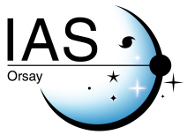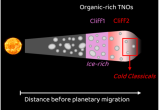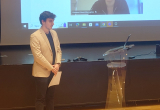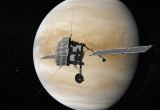The James Webb Space Telescope (JWST) is transforming our understanding of trans-Neptunian objects (TNOs), the icy remnants of planetary formation. As part of the DiSCo-TNOs project, researchers have used JWST’s near-infrared data to identify two distinct groups among spectrally red TNOs, believed to be rich in organics. The key difference between these groups is the presence of surface ices—particularly methanol (CH₃OH) ice.











